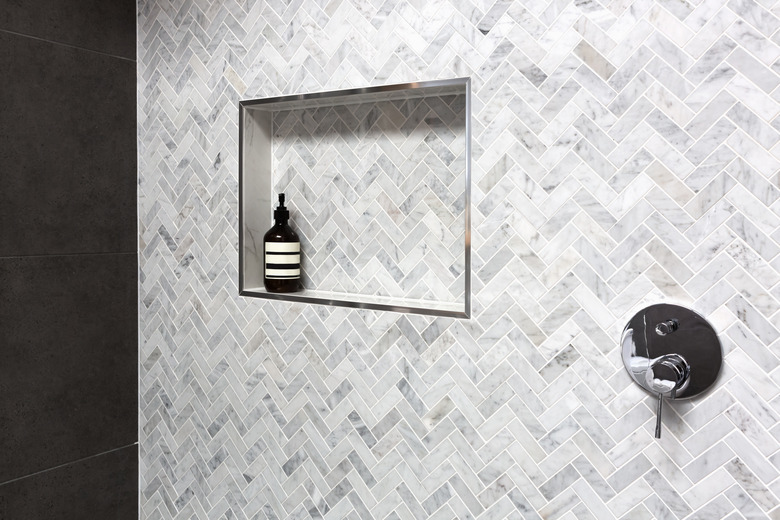Can I Put Backer Board Over Drywall For Shower Tiling?
We may receive a commission on purchases made from links.
No matter what part of your home you are remodeling, you want to ensure that the new installations will last for years to come. With tile showers, in particular, you can have a lifetime guarantee as long as you follow the proper installation methods. While it might sound like a good idea to install cement backer board over drywall before tiling the shower, the reality is that the drywall should be removed beforehand in most instances.
Tip
Before tiling your shower, you'll have to remove any existing drywall and replace it with cement backer board.
Tile Needs a Moisture Barrier
Tile Needs a Moisture Barrier
Traditional cement backer boards and fiber boards require some type of moisture barrier to be installed — behind the board and against the studs on the wall — to protect the wooden wall components from eventual water seepage. Installing the cement board tightly against the drywall affects the breathing aspect of the vapor barrier and traps moisture in, eventually rotting and crumbling the drywall and exposing the wall studs to moisture damage.
Two Layers Is Too Thick
Two Layers Is Too Thick
For most shower walls, the drywall installed in the home during the building phase is cut off at the edge of the shower opening, and then backer board is installed in place of the drywall in the wet areas. The backer boards are usually around 1/2 inch thick in both cases.
If you install another layer of backer board on top of drywall, the problem you will encounter is that the wall is now another half inch thicker, leaving an ugly reveal behind that has to be covered, and covering it is problematic. Feathering it with drywall mud is impossible, so you would have to use some type of trim, and the trim is bound to get in the way of the tiles.
Drywall Deteriorates in Moisture
Drywall Deteriorates in Moisture
The reality of tile installation is that tiles contain cement, which naturally breathes in and out and contains and expels moisture over the course of its life. Water is the bane of drywall's existence, as it turns drywall into a gooey mass that falls apart if sufficient water is present.
Cement backer boards, on the other hand, do not have this issue, which is why they are used instead of drywall. Another problem is that mold grows in drywall, so if moisture is passing through the cement board into the drywall, it's creating ideal conditions for a mold colony, which will hasten deterioration of the wall studs and create a giant headache in a few years.
Alternatives to Layering Over Drywall
Alternatives to Layering Over Drywall
There really aren't any practical alternatives to removing existing drywall prior to tiling a bathroom wall unless it happens to be water-resistant drywall. This type of drywall, a contemporary version of greenrock, which was formerly the go-to product for drywalling bathrooms, contains additives to make it mold and moisture resistant.
Water-resistant drywall isn't completely waterproof, though, and should not be used as a substitute for cement board on walls that come into direct contact with water, such as shower walls. If you want to tile over shower walls, the existing drywall has to go, and it has to be replaced with cement board.
